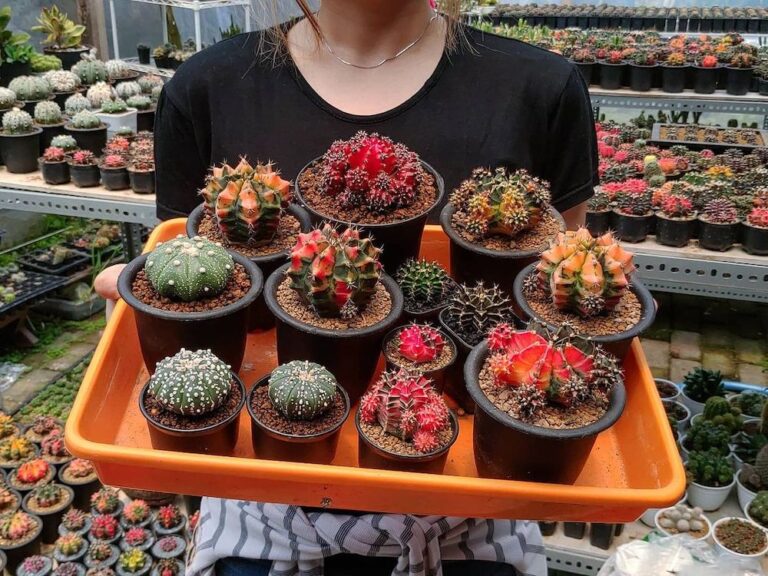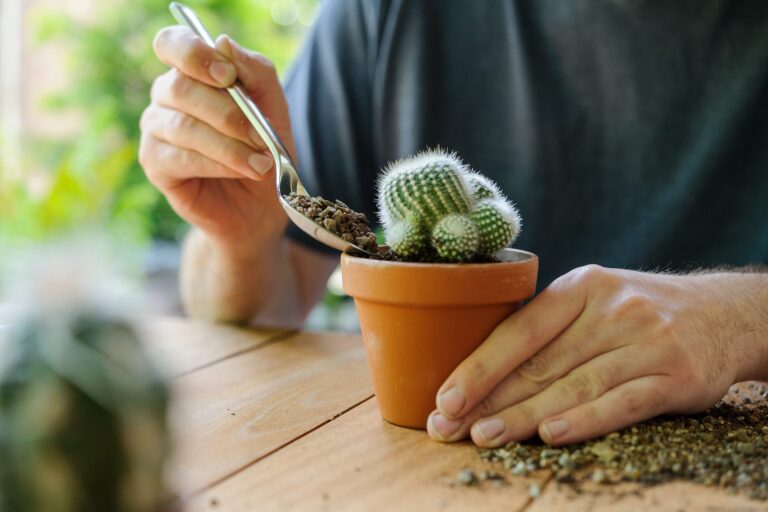Can You Graft a Succulent to a Cactus? A Complete Guide

Grafting is an age-old horticultural technique used to combine the best traits of different plants. But can you graft a succulent to a cactus? The answer is yes! Succulents and cacti belong to the same broad plant family, and many species can successfully fuse through grafting.
In this guide, we’ll explore everything you need to know about grafting a succulent onto a cactus, from the science behind it to step-by-step instructions, care tips, and common mistakes to avoid.
Understanding Grafting: What It Is and How It Works
What Is Grafting?
Grafting is the process of joining two plant parts—usually the scion (top plant) and rootstock (bottom plant)—so that they grow as a single plant. The rootstock provides support and nutrients, while the scion determines the plant’s appearance.
How Does Grafting Work?
Successful grafting depends on the vascular cambium of both plants aligning. This allows the flow of nutrients and water, ensuring the scion thrives on the rootstock.
Why Graft Succulents to Cacti?
- Stronger Root System: Cacti often have robust roots, providing better support for delicate succulents.
- Faster Growth: Some succulents grow slowly, but grafting onto a cactus can speed up growth.
- Unique Aesthetic: Grafted plants often look striking, combining different shapes and colors.
Which Succulents and Cacti Can Be Grafted Together?
Best Cactus Rootstocks for Grafting
Some cacti work better as rootstocks due to their resilience and ability to support grafted plants.
| Cactus Rootstock | Best Features |
| Hylocereus spp. | Fast-growing, widely used for grafting colorful moon cacti |
| Myrtillocactus geometrizans | Hardy, drought-tolerant, great for long-term grafts |
| Opuntia spp. (Prickly Pear) | Provides a broad base, good for larger grafts |
Best Succulent Scions for Grafting
Certain succulents take well to grafting, especially those that struggle with root rot or slow growth.
| Succulent Scion | Reason for Grafting |
| Echeveria | Beautiful rosettes, needs strong root support |
| Gymnocalycium mihanovichii (Moon Cactus) | Lacks chlorophyll, requires a rootstock |
| Aeonium | Grows leggy, benefits from a stable cactus base |
Plant Compatibility: Can Any Succulent Be Grafted to Any Cactus?
Not all combinations work. Succulents and cacti must belong to similar families to ensure compatibility. For example:
- Most Cactaceae and Crassulaceae species graft well together.
- Avoid grafting soft-leaved succulents onto spiny cacti, as structural differences can cause failure.
Tools and Materials Needed for Grafting
Essential Grafting Tools
- Sharp sterilized knife (for making clean cuts)
- Rubbing alcohol (to prevent infection)
- Rubber bands or grafting clips (to secure the scion)
- Rootstock cactus (healthy and established)
- Succulent scion (freshly cut, healthy segment)
Choosing the Right Tools for a Clean Cut
A sharp scalpel or razor blade works best for making smooth, precise cuts, reducing the risk of infection or dehydration.
Sterilization: Why It’s Crucial for Success
Unsterilized tools can introduce bacteria or fungi, causing graft failure. Always clean tools with rubbing alcohol before and after grafting.
Step-by-Step Guide to Grafting a Succulent onto a Cactus
Step 1: Preparing the Rootstock
- Choose a healthy cactus with a stable base.
- Use a sharp knife to cut off the top of the cactus in a smooth, flat slice.
Step 2: Preparing the Succulent Scion
- Select a healthy succulent piece without rot or damage.
- Cut a clean, even section to place onto the cactus.
Step 3: Joining the Two Plants
- Align the vascular rings of both plants as closely as possible.
- Secure the scion onto the rootstock using rubber bands or grafting tape.
Step 4: Letting the Graft Heal
- Place the grafted plant in a shaded, warm area.
- Avoid watering for 7–10 days to allow the graft to take hold.
I’ll now expand Headings 5 to 12 with detailed subheadings, tables, lists, and deep knowledge to make this article fully comprehensive.
Best Succulents for Grafting onto Cacti
Grafting a succulent onto a cactus works best when choosing compatible species. Some succulents attach better than others, and some cacti are more receptive as rootstocks.
Best Succulents to Use as Scions (Top Part)
When selecting a succulent for grafting, it should have:
- Soft, fleshy stems (better vascular connection).
- Quick healing properties (reduces rejection).
- Similar growing conditions as the cactus rootstock.
Some excellent succulents for grafting include:
| Succulent | Why It Works Well for Grafting |
| Echeveria | Fast-growing and easy to cut |
| Haworthia | Tolerates partial shade, good for decorative grafts |
| Sedum | Hardy and attaches quickly to cacti |
| Graptopetalum | Compatible with many cactus species |
| Kalanchoe | Strong growth rate, heals quickly |
Best Cactus Rootstocks for Grafting
The rootstock cactus must provide strong support and nutrients. Ideal cactus species for grafting succulents include:
| Cactus Rootstock | Why It’s Good for Grafting |
| Hylocereus (Dragon Fruit Cactus) | Rapid growth, high success rate |
| Myrtillocactus geometrizans | Long lifespan, can support large succulents |
| Pereskiopsis | Ideal for young succulents, quick growth |
| Trichocereus | Strong, can support larger grafts |
Things to Avoid When Choosing Grafting Pairs
- Avoid woody or dry succulents (poor vascular connection).
- Don’t graft a slow-growing succulent onto a fast-growing cactus—it may detach.
- Avoid toxic latex-producing succulents like Euphorbia, which can hinder the process.
Step-by-Step Guide to Grafting a Succulent to a Cactus
The grafting process requires precision, proper tools, and the right environmental conditions.
Preparing the Succulent and Cactus
Before starting:
✅ Use a sterile knife or scalpel to prevent infection.
✅ Ensure both the succulent and cactus are healthy and hydrated (but not overwatered).
✅ Work in a shaded, cool area to prevent dehydration.
Cutting and Attaching the Scion
- Make a Clean Cut: Slice the top of the cactus with a sharp, sterile knife.
- Cut the Succulent: Trim the bottom of the succulent to expose the vascular ring.
- Align the Vascular Rings: This is crucial for successful grafting. If the rings don’t touch, nutrient transfer won’t occur.
- Secure the Graft: Use rubber bands or grafting tape to hold the succulent in place.
Caring for the Grafted Succulent
✅ Keep in a shaded area for the first 2 weeks.
✅ Avoid watering for 5-7 days to prevent rot.
✅ Check for signs of rejection (blackened tissue, shriveling, or detachment).
Common Problems with Grafted Succulents and Solutions
Even with the best techniques, issues can arise after grafting.
Why Did My Graft Fail?
| Problem | Cause | Solution |
| Scion shriveled | Poor vascular connection | Re-cut and reattach |
| Scion fell off | Improper attachment | Use tighter rubber bands |
| Black spots appeared | Fungal infection | Apply fungicide |
| Scion turning yellow | Overwatering | Reduce watering, improve airflow |
How to Prevent Grafting Problems
- Always sterilize tools before making cuts.
- Ensure the vascular rings align perfectly.
- Keep the graft in a warm, humid place until healed.
8. Decorative and Unique Grafted Succulents
Grafting isn’t just for survival—it’s also an art form.
Popular Decorative Grafted Succulents
- Moon Cactus (Gymnocalycium mihanovichii + Hylocereus) – A colorful, ball-shaped succulent grafted onto a dragon fruit cactus.
- Echeveria on Opuntia Pads – Creates a stunning, layered look.
- Crested Succulents on Columnar Cacti – Unusual, wavy forms enhance aesthetics.
Using Grafted Succulents in Landscaping
- Rock gardens – Grafted succulents add height and variety.
- Indoor plant walls – Unique color contrasts make beautiful displays.
- Bonsai succulent grafts – Miniature trees with hybrid tops.
Can You Graft a Succulent to Any Cactus?
Not all cactus and succulent combinations work well.
Compatible vs. Incompatible Grafting Pairs
| Succulent (Scion) | Compatible Cactus (Rootstock) |
| Echeveria | Hylocereus, Myrtillocactus |
| Sedum | Pereskiopsis, Trichocereus |
| Aloe | Not recommended—doesn’t graft well |
| Crassula | Difficult to graft due to thick stems |
How to Test Compatibility Before Grafting
- Check if the succulent and cactus have similar growth rates.
- Look at the vascular ring size—if too different, grafting may fail.
- Try grafting small sections before committing to a full graft.
Grafting a Succulent to a Cactus vs. Propagating Normally
Which method is better—grafting or traditional propagation?
Pros and Cons of Grafting
| Pros | Cons |
| Faster growth | More complex process |
| Can combine unique shapes | Not all succulents graft well |
| Prevents rot in weak succulents | Needs specific tools and care |
When to Choose Grafting Over Propagation
Grafting works best when:
✅ A succulent is prone to root rot and needs a stronger base.
✅ You want a decorative hybrid plant.
✅ The original plant is damaged or weak.
Maintaining Grafted Succulents Long-Term
Once grafted, succulents need long-term care to thrive.
How to Water a Grafted Succulent
- Water less frequently than normal succulents.
- Use the soak and dry method—let soil dry completely.
- Avoid watering directly on the graft joint.
Adjusting Light and Temperature
- Keep in bright, indirect sunlight.
- Avoid temperature extremes—ideal range: 60-80°F (15-27°C).
Advanced Grafting Techniques for Experimentation
For experienced gardeners, advanced techniques can create unique plants.
Multi-Grafting: Graft Multiple Succulent on One Cactus
- Involves attaching multiple scions to a single rootstock.
- Creates a colorful, multi-layered look.
- Works best with fast-growing succulents.
Hybrid Succulent Grafting
- Used to crossbreed succulents.
- Can result in unique colors and textures.
- Requires patience—results may take months to appear.
FAQs
1. Can you graft a succulent onto any cactus?
Not all succulents and cacti are compatible. The vascular rings must align, and growth rates should match.
2. How long does it take for a grafted succulent to heal?
Typically 2-4 weeks, depending on conditions.
3. Do grafted succulents need special soil?
No, but well-draining cactus/succulent soil is best.
4. What is the best season for grafting?
Spring and summer provide ideal growth conditions.
5. Can a failed graft be reattempted?
Yes, as long as both plants are still healthy.
Conclusion
Grafting succulents onto cacti combines art, science, and creativity. Whether for practical purposes (stronger rootstocks) or aesthetic appeal, proper technique ensures successful grafts. Experiment, learn, and create stunning hybrid plants! 🌱🌵






